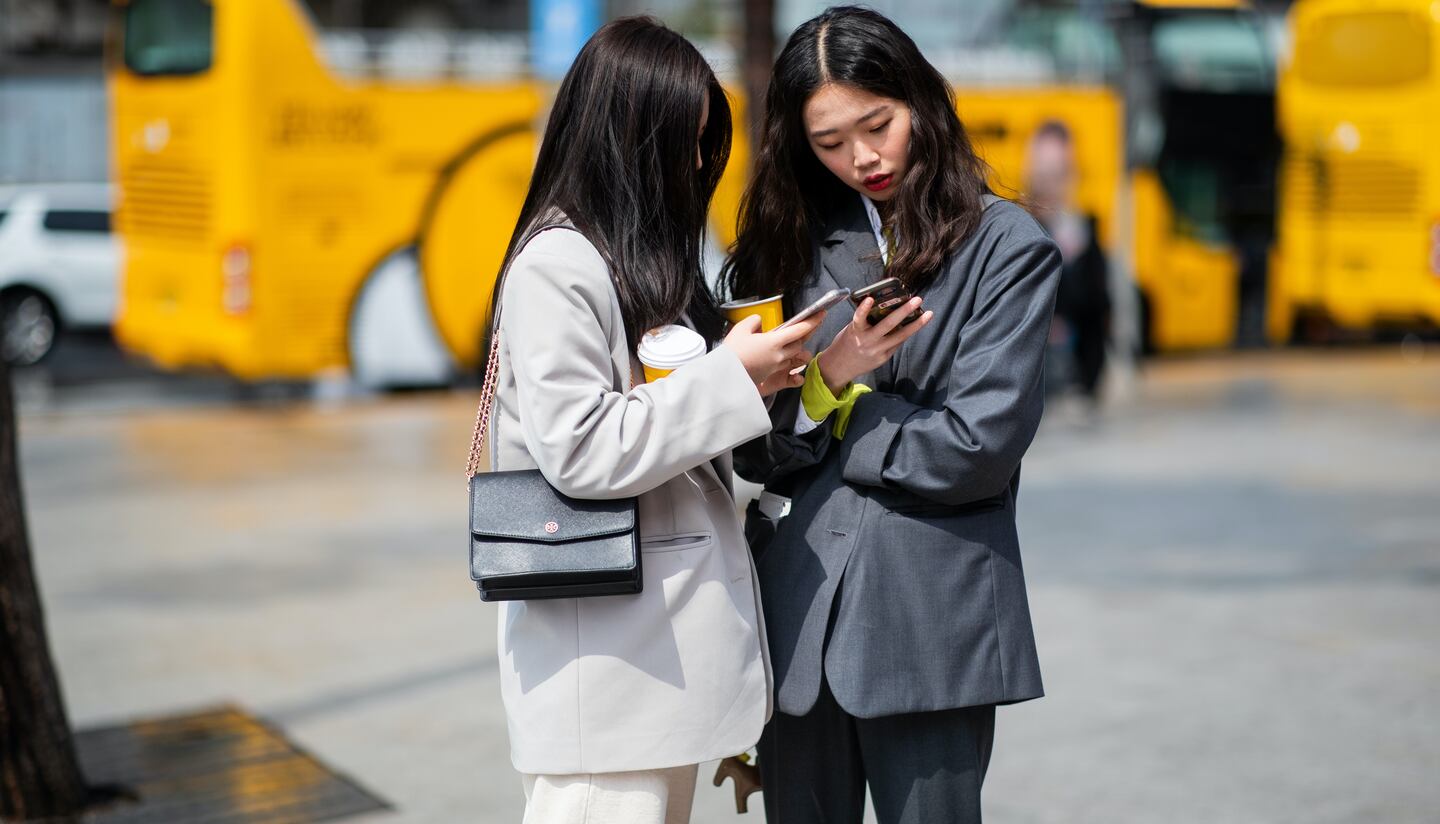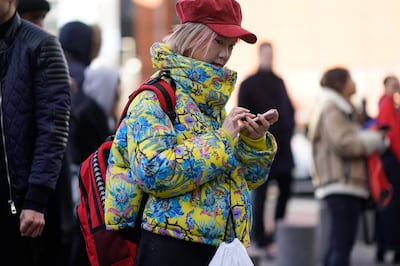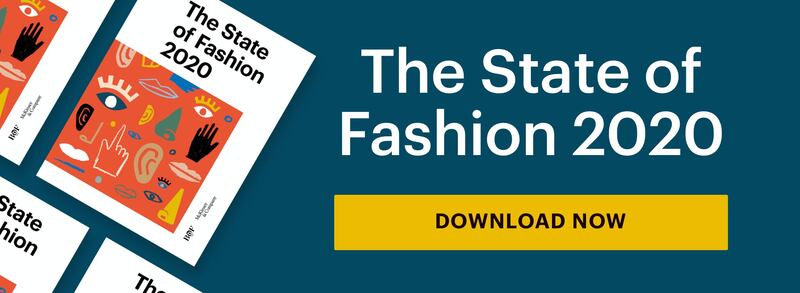
The Business of Fashion
Agenda-setting intelligence, analysis and advice for the global fashion community.

Agenda-setting intelligence, analysis and advice for the global fashion community.

LONDON, United Kingdom — It has become abundantly clear that the future of digital connectivity lies in Asia. Beyond the sheer number of "next-gen" social media platforms cropping up across the continent, it is the speed at which they evolve that stuns the average marketing executive. Dozens of dynamic networks mingle and collide in this region's vast, vibrant and increasingly tangled ecosystem where the variety on offer can overwhelm would-be partners and fashion brands alike.
Though tech hubs from Stockholm to Tel Aviv have been heralded the “next Silicon Valley,” the “social media industry in Asia is advanced and more competitive than [those in] other regions,” says Hiromi Yamaguchi, a Tokyo-based senior analyst at market research firm Euromonitor.
While growth on major social media platforms is slowing in western economies, the potential looks brighter in the east. GSMA Intelligence forecasts that in Asia Pacific the rate for unique mobile penetration will grow from 67 percent in 2017 to 73 percent by 2025 and that the region will account for just over half of new mobile subscribers globally by the same year.
The region’s early rollout of 4G and then 5G networks and the mobile-first nature of consumer behaviour has long meant that Asia is a natural environment for social media to flourish. The result of these and other digital advancements is that Asia is now where the bulk of social innovation is happening — so much so that Silicon Valley’s giants have begun to imitate their new eastern rivals.
ADVERTISEMENT
Last year, Facebook chief executive Mark Zuckerberg announced plans to reshape Facebook’s social networking apps into a super-app, not unlike China’s WeChat, South Korea’s KakaoTalk, Indonesia’s Gojek or Japan’s Line. More recently, Google began moving toward the super-app model through its new Spot platform in India, which will allow businesses to create in-app experiences accessible through Google Pay (mirroring WeChat’s mini programme function and Gojek’s multi-service model).
A gap is widening between local Asian fashion players [...] and global fashion players.
These and other Asian behemoths have become an indispensable part of daily life across the continent, but global fashion players — many of which rely on young Asian shoppers to keep their businesses buoyant — have only begun to wake up to their potential.
Greater Fluency and Earlier Adoption Is Needed
While mobile users in the west remain tethered to their Instagram, WhatsApp and Snapchat accounts, Asia’s local social platforms continue to optimise and pioneer new functions at a dizzying pace, preparing to usurp screen time from the global giants. The same can be said about the fashion companies trying to harness these “next-gen” social platforms.
A gap is widening between local Asian fashion players, typically fast and fluent in local platforms, and global fashion players, often slow to adapt and not as fluent as they need to be. So long as this gap remains, the former will have a marketing advantage over the latter. International fashion brands and retailers must move faster to keep up.
Tech experts and marketers are now marvelling at the astronomical rise of Chinese social video platform TikTok, which raked in 188 million downloads in 2019’s first quarter and continues to dominate global rankings, according to mobile app intelligence firm Sensor Tower. But global recognition of TikTok — and of its Beijing-based parent company Bytedance — came late.
Two years before the global fashion and beauty industry woke up to the popularity of TikTok, local Chinese brands recognised the opportunity of Douyin, TikTok's sister app. Douyin was launched by Bytedance in 2016 and has since lured Chanel and Dior to build their own accounts. While not every brand can be an early adopter and not every platform is suitable for every brand, it is important to be nimble enough to deploy a dedicated social strategy for platforms when the time is right.
People [in Asia] don't hold onto legacy behaviours such as using Facebook or sticking with credit cards instead of mobile payment.
Thanks to the rapid economic development that took China by storm (and is now sweeping through India and Southeast Asian economies like Vietnam), mobile users in these countries appear to be more receptive to the unfamiliar.
ADVERTISEMENT
“People [in Asia] don’t hold onto legacy behaviours such as using Facebook or sticking with credit cards instead of mobile payment,” says Arnold Ma, founder and chief executive of Chinese digital marketing agency Qumin. “When something new comes out, people welcome it with open arms.”
This explains why tech currents increasingly flow from the east. “The west is just seeing successful examples and copying it,” Ma says. “They’re using Asia as a guinea pig.”
Staying on top of Asian social platform developments is not only important to better reach consumers in Asia. Brands can also apply learnings from social media trends in Asia to their business elsewhere, giving them an edge over competitors in non-Asian markets. So, what do Asia’s next-gen social media foretell?
Vertical Communities in the Era of Nichification
“Human beings don’t live their lives as one massive community on one platform. We’re specific about the activities we engage in,” wrote Kavin Bharti Mittal, the founder and chief executive of up-and-coming Indian messenger app Hike, in a blog post. In 2016, Hike raised $175 million in funding from Tencent and Softbank.
“It would be the norm as these new social networks cater to a more verticalised audience,” Mittal continued, referring to “the rise of social niches” as the future of social media.
While not all up-and-coming platforms will become social media channels or advertising partners for fashion and beauty marketers, they help colour in a wider picture of how people will communicate, shop and seek entertainment.
Elijah Whaley, vice president of growth at Shanghai-based Acorn Digital, echoes that Asia’s successful next-gen platforms are catering to users’ “psychographic and demographic appeals.” He cites Bilibili, a Chinese short video platform that emerged almost a decade ago as a community for anime lovers and gamers, but since grew into a NASDAQ-listed company boasting over 110 million monthly active users (MAUs) watching videos on topics from gaming and e-sports to makeup and wardrobes.
ADVERTISEMENT

A guest outside Off White, during Paris Fashion Week | Source: Edward Berthelot/Getty Images
Though largely untapped by global brands, Bilibili’s audience is predominantly Gen-Z and the company recorded net revenues (from in-game purchases, live-stream transactions, advertising and e-commerce) of $224 million for the second quarter of 2019 — a 50 percent year-on-year boost. Despite a “no advertisements” policy, it inked a deal with Alibaba’s Taobao in 2019 to connect its creators with the e-commerce marketplace.
A platform more familiar to fashion and beauty marketers is Chinese social e-commerce unicorn Xiaohongshu, which caters to millennial women looking for beauty, fashion and lifestyle recommendations. Years before Instagram unlocked in-app purchasing, the Shanghai-based company set a precedent for successful e-commerce functionality within a social media, community-centric infrastructure, finding a seamless balance that global retailers and tech firms will probably try to replicate for years to come.
But in addition to its success as a social e-commerce hybrid, Xiaohongshu tailors its experience to users’ various social niches. When a user responds well to content, be it lipstick swatches, Tokyo restaurant recommendations or weight-lifting tutorials, their ‘Explore’ page adapts accordingly, and immediately.
By contrast, Instagram’s ‘Explore’ page algorithm has been known to, as Refinery 29 described it, get “out of whack.”
Xiaohongshu recently found its male-centric equivalent in Chao, which allows users to join communities of interest from Star Wars to the brand Supreme. “Firms are creating products and aggregating communities with more in common with each other, and developing functionality specifically tailored to their needs,” Whaley says.
The list of increasingly specialised social apps goes on: while India’s “interest-based community app” Helo specialises in viral news, Beijing-based social network Douban appeals to users interested in arts and culture (and could be an option for the likes of Chanel, which invests in global exhibitions and an arts and culture podcast).
South Korean app WeVerse — developed by the entertainment label behind global boy-band phenomenon BTS — allows K-Pop idols to communicate with their fans across the globe. Considering the clout of stars such as Gucci global ambassador Kai (of boy-band EXO), Jisoo and Chanel house ambassador Jennie Kim (of Blackpink), the platform has the potential to become an asset for luxury houses eyeing K-Pop's young audience.
Meanwhile, science-backed skincare companies could appeal to consumers by reaching out to key opinion leaders (KOLs) on knowledge-sharing platforms like Zhihu, the Chinese Quora clone-turned education and social community. According to iResearch, 80 percent of Zhihu’s registered users have a bachelor’s degree or above.
“You find a lot of sharing on social media but it’s hard to know what to trust,” says Yash Mehta, Bengaluru-based tech columnist and contributor to Tech in Asia. “A platform where you know a person has a subject-matter expertise through a badging system is in great demand.”
Even blogging and messaging apps are becoming more tailored to reflect IRL vertical communities and will provide brands with a unique opportunity to communicate with shoppers, take customer service to new heights and cultivate vertical communities with high engagement.
A platform where you know a person has a subject-matter expertise through a badging system is in great demand.
As Hike climbs the ranks in India, messaging app Telegram has drawn 300 million monthly users across Singapore, Thailand, the Philippines as well as parts of the Middle East and Eastern Europe, by allowing people to customise their messaging experiences. The encrypted app (a draw for increasingly privacy-minded users in some of these markets) also includes a platform for developers, allowing anyone to build specialised tools and integrate services. Where retailers are already using personal exchanges to build relationships with consumers over WeChat and WhatsApp, Telegram, while still quiet where global brands are concerned, could prove integral for Southeast Asia. British e-commerce site Asos has already set up its own channel.
Social apps that focus on dating and women’s empowerment are also potentially lucrative marketing channels. Take Singapore-based Dayre, a female-only paid blogging app and network, that aims to foster “a safe space where women could come together to express themselves in whatever way they choose” — a community and ethos that could appeal to women-focused brands from Glossier to intimates brand ThirdLove.
Couples’ messaging apps such as Japan’s Pairs and South Korea’s Between are also thriving, allowing users to communicate, share media and match their schedules — a channel with potential for luxury brands looking to market Valentine’s Day campaigns and gifting-friendly items such as jewellery, accessories and perfume.
Customised Content Meets Cutting Edge Technology
Despite the move toward nichification, some big platforms that serve broader audiences will continue to perform well for fashion and beauty brands, but only by investing in sophisticated new functions.
Live streams, for all the attention they have garnered, aren’t losing steam. Singaporean Bigo Technology’s live streaming and short video apps Likee Video and Bigo Live both ranked in Sensor Tower’s top ten social media apps globally in August 2019. But users are spoilt for choice and the space is competitive.
Regionality is key to understanding how to spread a brand’s marketing spend. According to SimilarWeb, Middle Eastern and Southeast Asian audiences are partial to Bigo Live, TikTok and Tango, while Livza is an Indian favourite and Japan loves Pococha Live. In China, YY.com, Inke, Huajiao and Yizhibo are just a few of the contenders, while giants like Alibaba’s Taobao, Tencent’s WeChat and Xiaohongshu have all optimised their apps with live stream functions of their own.
Beauty brands in particular should pay attention to Asian live stream opportunities. Live stream influencer Li Jiaqi, also known as China's "Lipstick Prince," rose to fame for reportedly selling over 15,000 lipsticks in just 15 minutes on Taobao. But the medium is also being used by luxury houses, from live streaming runway shows and makeup demos (cue Burberry and Dior) to advertising and seeding products to influencers and celebrities. Such platforms may cater to a younger demographic, but users aren't afraid to spend. According to Sensor Tower, Douyin and TikTok grossed $11.7 million through in-app sales of virtual coins in July 2019 alone.

Chinese National Day in Beijing, China | Source: Guang Niu/Getty Images
One of Japan and South Korea’s favourite apps, Snow was launched as a Snapchat dupe by Korean internet search giant Naver but has since abandoned messaging functions to focus on helping users take flattering selfies and videos with an impressive array of augmented reality filters. In 2018, Snow raised $50 million from Softbank and Sequoia Capital China, and as of January 2019, James Mattone reported that Snow ranks among the top 100 apps for MAUs via Facebook logins, beating Netflix and ubiquitous US payments app Venmo.
Snow has already seen its share of fashion and beauty ads, but its augmented reality and facial recognition capabilities (the result of a partnership with Hong Kong-based AI unicorn SenseTime) will enable global brands to craft new online-offline experiences.
Artificial intelligence will become more integral to engagement. On Douyin (and TikTok, as well as rival apps like Xigua), users’ home pages feature an AI-powered curation of content. “Rather than having a niche platform, I think all this content will live under the same platform, but everyone will have a different experience according to what they want,” says Ma. “It will all be tailored to users.”
In September, Douyin launched a game-changing in-video search function, allowing users to select a person or item of clothing and search for other posts containing them or buy the goods directly. “Brands need to be working toward how they can leverage the direction that social is moving to, and they need to be doing that now,” Ma wrote online.
“This is merely the tip of the iceberg.”
Super-Apps Morphing into Operating Systems
Though standalone apps will become more targeted, personalised and community-centric, super-apps won’t stop being a valuable channel for engagement and sales.
Take WeChat, which in early 2019 announced that its daily active users had hit a staggering one billion. Growth is now slowing down, however, and some users are abandoning the super-app.Research firm Jiguang estimates that only 15 percent of people born after 2000 post daily on WeChat, as younger users dedicate more screen-time to platforms like Douyin (51 percent of the latter’s user base was born after 1995).
Though some users may look elsewhere for their social media needs, Ma doesn’t think WeChat will lose its dominance in China. Fortunately for parent company Tencent, the platform has morphed into something far greater than a social media tool.
“WeChat will never be irrelevant as a social operating system, with the utilities it provides such as mini programmes,” he says, referring to the app-in-app function allowing users to access other platforms and perform transactions without leaving WeChat’s interface — not unlike software such as Apple’s iOS that grants a user the opportunity to run other applications.
Brands need to be working toward how they can leverage the direction that social is moving to.
Louis Vuitton, Celine and Dior have all invested in e-commerce and gamified mini programmes of their own for the super-app, and Armani beauty partnered with L’Oréal last year to launch theirs: an augmented reality virtual try-on shop that allowed users to try on lip colours without leaving their seat, or WeChat. “[WeChat is] more of a platform for other apps now,” Ma adds.
It is a similar positioning for Line, which in addition to 81 million MAUs in Japan has an avid user base in Thailand and Indonesia (amounting to 194 million globally) and counts Fendi and Dyptique as advertisers. Line users are likely to stick around for its range of services from mobile payments to navigation, if not the whole package. “Line has penetrated into every corner of Japanese lifestyle,” Euromonitor’s Yamaguchi says.
Yet fashion and luxury brands have so far been less willing to invest in ways to leverage super-apps like Line, South Korea’s KakaoTalk or Indonesia’s Gojek. Most have been focusing all their efforts to keep up with WeChat in China. China’s colossal size may be the justification, but that does not discount missed opportunities elsewhere using Asia’s other super-apps.
Despite the domination of super-apps, the rise of hyper-personalised platforms also presents fresh opportunities to reach an engaged and targeted audience. This is good news for brands, given the rising costs of acquiring and retaining consumers in competitive markets like China: the cost per thousand user views (CPM) of advertisements placed on Tmall has increased by an average of 60 percent since 2017, according to McKinsey’s ‘China Digital Consumer Trends in 2019’ report.
Either way, companies will be empowered to tailor their offerings and activations to their platform of choice, and each platform will acquire a stronger purpose. “Connect with your audience in different ways on different platforms, adapt your strategy [and] tactics to the user behaviours on various platforms and you will be rewarded for your effort,” advises Ma.
Connect with your audience in different ways on different platforms, adapt your strategy.
As ever, the caveat is for fashion players to ensure that any new platforms align with the brand’s DNA and objectives — and, wherever possible, to create content especially for that platform. For apps like Douyin, this means highly engaging content in a vertical short-video format. “Don’t use recycled videos from other channels and previous campaigns because the type of video that works well is very different and unique to Douyin,” Ma adds.
Though strategies will vary per platform, Whaley predicts that the brands who get the most out of “next-gen” social media will be the ones who see them through the eyes of everyday users. “Brands are always promoting or selling, and they forget that being on social media should be a social experience,” he warns.
Above all, crafting an engaging brand voice is what ties a digital presence together, especially on platforms that are new to brands. “Take a value-first approach to communication. Don’t miss the vision of being [genuine] communities,” Whaley adds.
Cutting-edge social platforms from Asia represent a lucrative opportunity in more ways than one, but for fashion and beauty players to cash in, they will need to remember to build trust and credibility on each platform.

Related Articles:
[ Inside China's New Capitals of ContentOpens in new window ]
[ Instagram Does Matter in China. Here's How Brands Can Use It.Opens in new window ]
[ Escaping the Wrath of China’s NetizensOpens in new window ]
Local streetwear brands, festivals and stores selling major global labels remain relatively small but the country’s community of hypebeasts and sneakerheads is growing fast.
This week’s round-up of global markets fashion business news also features Senegalese investors, an Indian menswear giant and workers’ rights in Myanmar.
Though e-commerce reshaped retailing in the US and Europe even before the pandemic, a confluence of economic, financial and logistical circumstances kept the South American nation insulated from the trend until later.
This week’s round-up of global markets fashion business news also features Korean shopping app Ably, Kenya’s second-hand clothing trade and the EU’s bid to curb forced labour in Chinese cotton.